The Australian White sheep, or Aussie White, is a new domestic meat sheep breed that originated from the selective breeding of various sheep types, including White Dorper, Van Rooy, Poll Dorset, and Texel sheep.
The Australian White sheep breed made its debut at the Sydney Royal Easter Show in 2011, marking its inaugural appearance at the event.
In 2019, the breed was introduced to the United States.
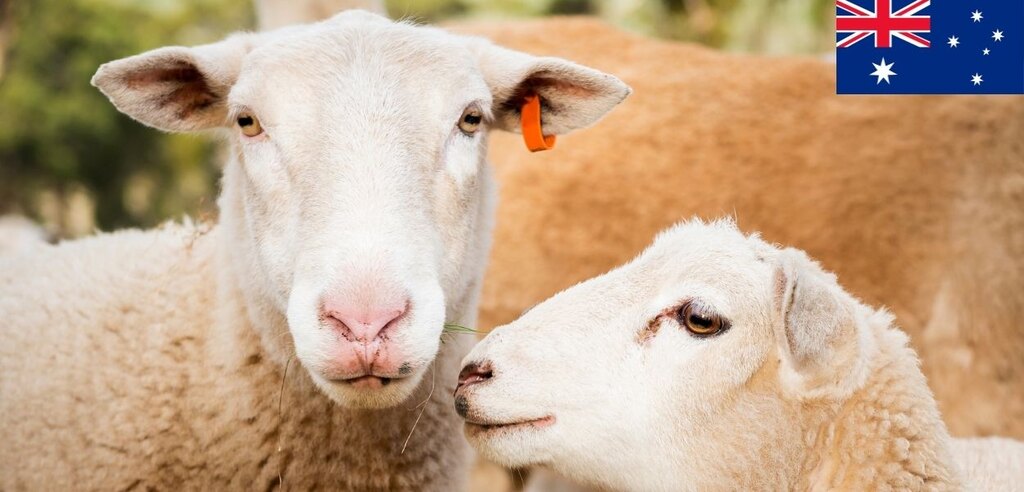
Contents
Characteristics
Having a diversified gene mix, this sheep has very distinctive physical characteristics that make it stand out in the sheep world.
Size
The Australian White sheep has a medium to large size and it is known for its good length, depth, width, and height.
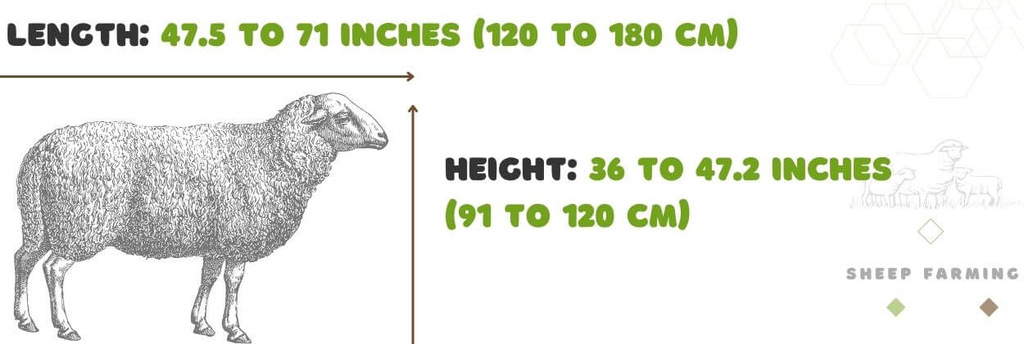
An adult sheep has a standing shoulder height ranging from 36 to 47.2 inches (91 to 120 cm) and a length of 47.5 to 71 inches (120 to 180 cm).
The body width falls between 17.5 to 28 inches (45 to 71 cm).
Color
This sheep has white skin as well as white hair.
Fleece
These sheep do not have wool since they are a hair sheep breed.
They have short white hair on their entire body, similar to other hairy sheep breeds like Barbados or Katahdin.
The density and thickness of their hair depend on the weather conditions. They develop a thick coat during the winter that keeps them warm, while in the warm season, they have the ability to shed, resulting in finer hair.
Head, Face, Eyes
The head has a medium size, as does the face. The face is very expressive, and in ewes, it has more feminine and even finer proportions.
The forehead is very wide, and the eyes are small and well-set apart.
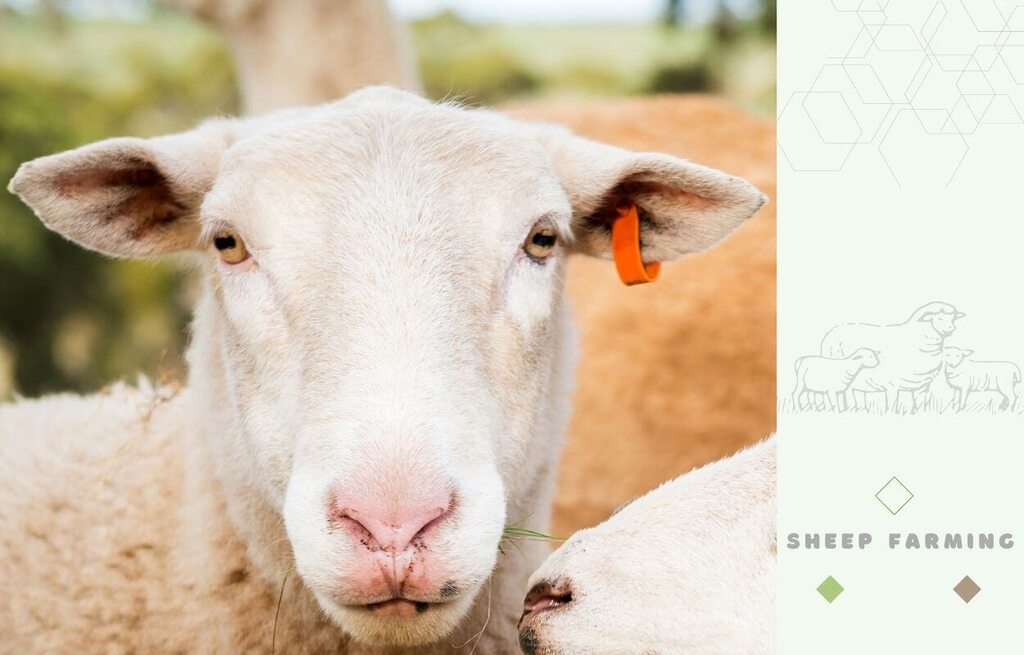
The muzzle, or nose area, is usually black, creating a sharp contrast with the white face.
Ears
The ears are of medium size in proportion to the head and have the same white color as the rest of the body. They are covered with hair and are semi-erect, standing partly upright.
Horns
Australian White sheep are polled.
Body
These sheep have a long, straight top line coupled with a deep body showcasing excellent spring of ribs.
Legs
The legs have a medium length and are very robust, supporting the weight very well.
The hind legs exhibit a good twist for excellent balance. The hooves are generally dark and strong, providing stability and durability for the sheep
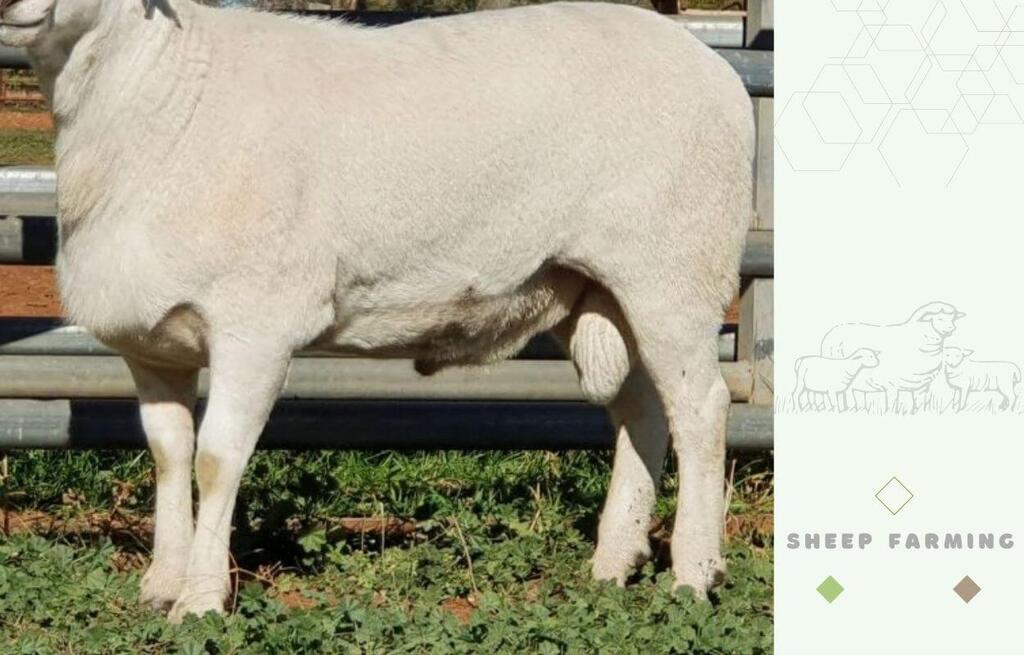
Testicles
The testicles of these sheep are well developed and do not hang too low.
Lifespan
Because this breed is quite new, it can not be said for sure how long it lives.
Growth Rate
How fast do they grow?
Australian White sheep grow fast, reaching a weight of 105 to 115 lbs (48 to 52 kg) at only 16 to 18 weeks (3 to 4 months) of age.
They also become sexually mature early in life at only 10 to 12 months of age when they are used for breeding.
The age of sexual maturity can be influenced by factors such as breed, nutrition, and management practices. Rams may reach sexual maturity a bit later than ewes.
Weight
Australian White sheep have a weight range of 154 to 264 lbs (70 to 120 kg).
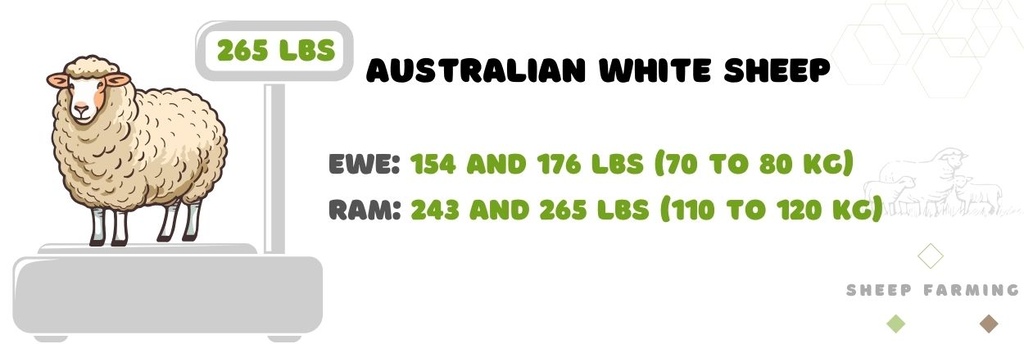
An adult ram weighs between 243 and 265 lbs (110 to 120 kg), while an adult ewe weighs between 154 and 176 lbs (70 to 80 kg).
Slaughtered age
These sheep can be slaughtered at the age of 5 to 6 months when they reach a live weight of 110 to 125 lbs (50 to 60 kg).
Sheep farmers prefer to use weight as an indicator when preparing for slaughtering, as this factor is a more reliable indicator than age.
Some lambs may reach the desired slaughter weight earlier or later, depending on factors such as nutrition and genetics
An Australian White sheep typically provides a meat yield equivalent to 65% of its live weight. For example, a 110 lbs (50 kg) lamb would yield approximately 71.5 lbs (33 kg).
Shearing
Australian White sheep do not have to be sheared, so you do not need to own sheep shears.
They are a hairy breed, similar to St.Croix or Blackhead Persian, making them a low-maintenance sheep breed to keep on the farm.
They develop a thick coat during the winter that keeps them warm. In the warm season, they have the ability to shed, resulting in finer hair.
Temperament and Behaviour
Australian White sheep are known for their docile nature. They are very calm animals, and even their physical traits and expressions reflect this docile temperament.
This makes them great animals to work with, as they offer little to no resistance.
They are social animals and love to live in the company of other Australian White sheep or any other sheep breed. Furthermore, these sheep create groups or flocks and show social behaviors such as flocking together for protection.
These sheep love to graze on fresh grass and explore. These sheep often display a curious nature. They may investigate new objects, smells, or changes in their environment. This behavior is a natural part of their exploration and adaptation process.
Usage
Australian White sheep are used for meat production.
They are raised for high-quality lamb meat, and their efficient growth and feed conversion make them suitable for this purpose.
Meat

The meat of Australian White sheep is considered to be similar to Wagyu beef, renowned in the beef industry.
The quality of this sheep meat receives high approval and is appreciated by chefs worldwide. It has a favorable lean-to-fat ratio, resulting in exceptionally marbled meat.
What distinguishes their meat is the quality of the fat. The fat is softer and exceptionally healthy, containing long-chain omega-3 polyunsaturated fatty acids. These fatty acids lower the temperature at which the fat melts.
While most sheep fat starts melting at 104 ºF (40 ºC), Australian White fat begins to melt at a lower temperature, around 91-95 ºF (33-35 ºC). This unique quality is favored by many chefs.
Overall, the meat offers a delightful flavor, fine texture, and optimal juiciness.
Raising
Raising Australian White sheep is not difficult, but it involves certain aspects of management and care that you need to follow to ensure their well-being and optimize meat production.
Feeding
You can feed them with fresh grass pasture in the summer and grains in the winter.
Even if the grass quality is not optimal, they can survive and gain weight well on scrubs and lower quality grass.
How many per acre?
You can raise 5 to 6 Australian White sheep per acre.
The exact number of sheep per acre depends on the level of vegetation present in the pasture. If the vegetation is abundant, then you can sustain a higher stocking rate of 6 to 7 sheep per acre. If the vegetation is lower in quality or not as dense, it is recommended to reduce the number accordingly to ensure that your sheep are well-fed.
Environment
These sheep thrive in open environments like pastures, grasslands, and different types of vegetation areas.
In such settings, they can graze freely and sustain their independence by self-feeding.
Climate
Australian White sheep can thrive in all kinds of climates, from desert heat to cold, snowy ones. Their high adaptability makes them even more attractive to farmers all over the world.
Shelter
Despite their hardiness and ability to tolerate diverse climates, Australian White sheep require shelter with hay bedding. This shelter provides a safe environment for relaxation and sleep, offering protection against predators.
Also, enclosing the entire pasture with an electric fence is necessary.
Breeding
These sheep breed very easily, and most of the time, it occurs naturally, but it can also be done via artificial insemination.
Ewes can become sexually mature around 6 to 8 months of age, although it’s common to wait until they are a bit older before breeding.
They can start to be bred from the young age of 10-12 months and can be bred every 8 months. The gestation period for Australian White sheep is around 145 to 150 days.
The litter size can vary, but they are known for their good reproductive characteristics. They often have a higher lambing percentage compared to some other breeds.
They have great mothering skills and do not need assistance in dealing with the lambs.
Why should you raise them?
- Homesteaders who prefer to have their own sheep meat without spending much time raising them.
- Small and large farmers who run businesses or are looking for a profitable addition to their farm.
The price of an Australian White sheep ranges from $2,700 to $3,700. Although the initial investment is not low, it is truly worth it.
They are highly fertile, capable of having lambs every 8 months.
With a good growth rate, they are extremely easy to manage and don’t require grooming. They are hardy, needing minimal care, and have superior eating qualities as they are not pretentious.
These sheep provide a substantial amount of meat with superior quality, renowned in the restaurant world.
Therefore, raising these sheep can be a good deal for those who want to enjoy high-quality sheep meat or make money.
A and D
Advantages
- High-Quality Meat with a great lean-to-fat ratio
- It Can thrive in various climates, from hot to cold.
- Ability to graze extensively on all types of grass
- Fast growth rate
- Great fertility
- Good mothering skills
- Minimal care (no shearing, no flies)
- Hardiness
Disadvantages
- High initial costs
- Market recognition – as this sheep is relatively new, there may be limited market recognition compared with other traditional breeds.
References
- NAWSS link
Do you have any experience with the topic discussed here?
Would you like to improve the information shared and contribute your practical knowledge on the subject?
Your real-world experience as a farmer or rancher could greatly benefit other members, and the community would deeply appreciate your contribution.


